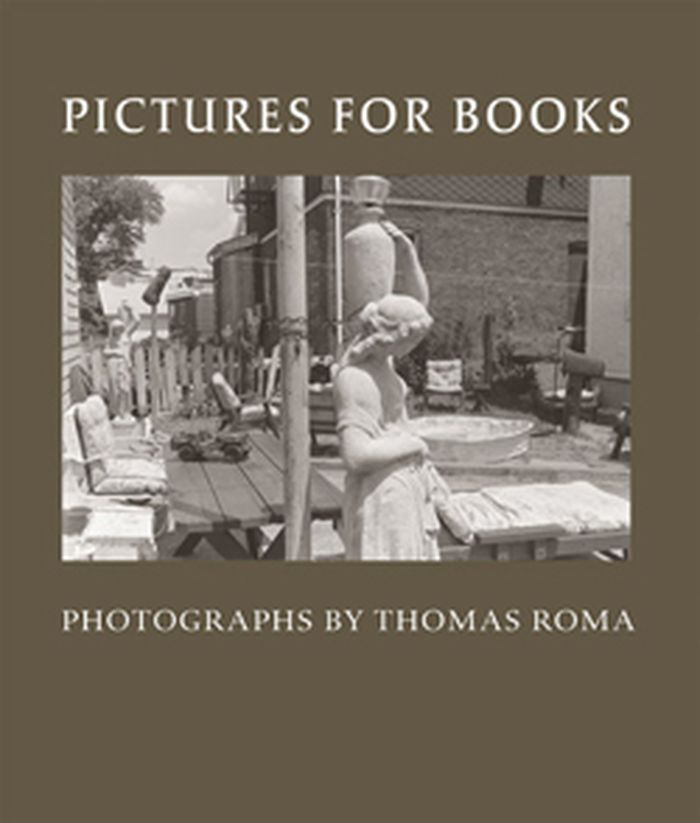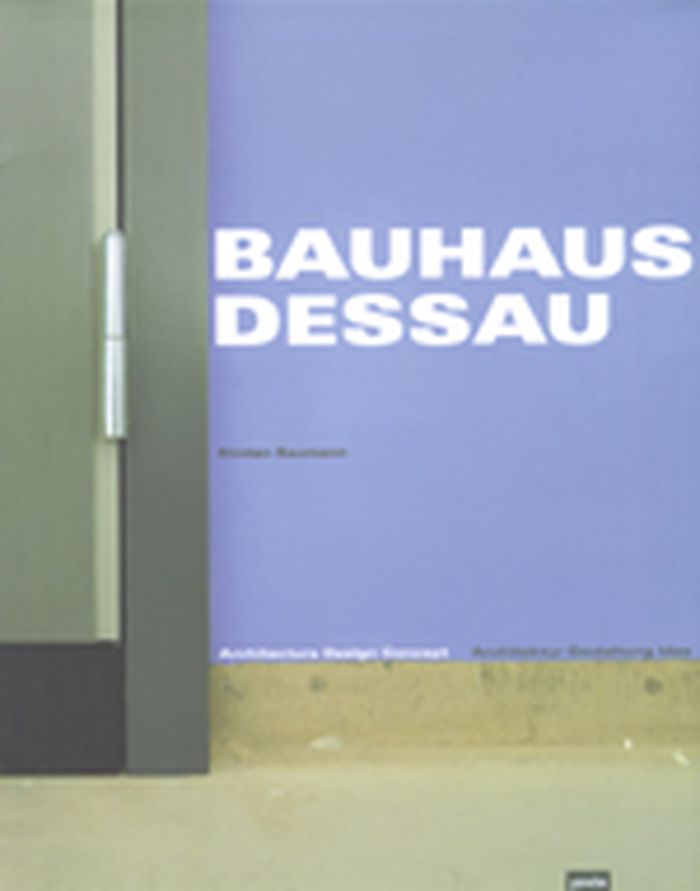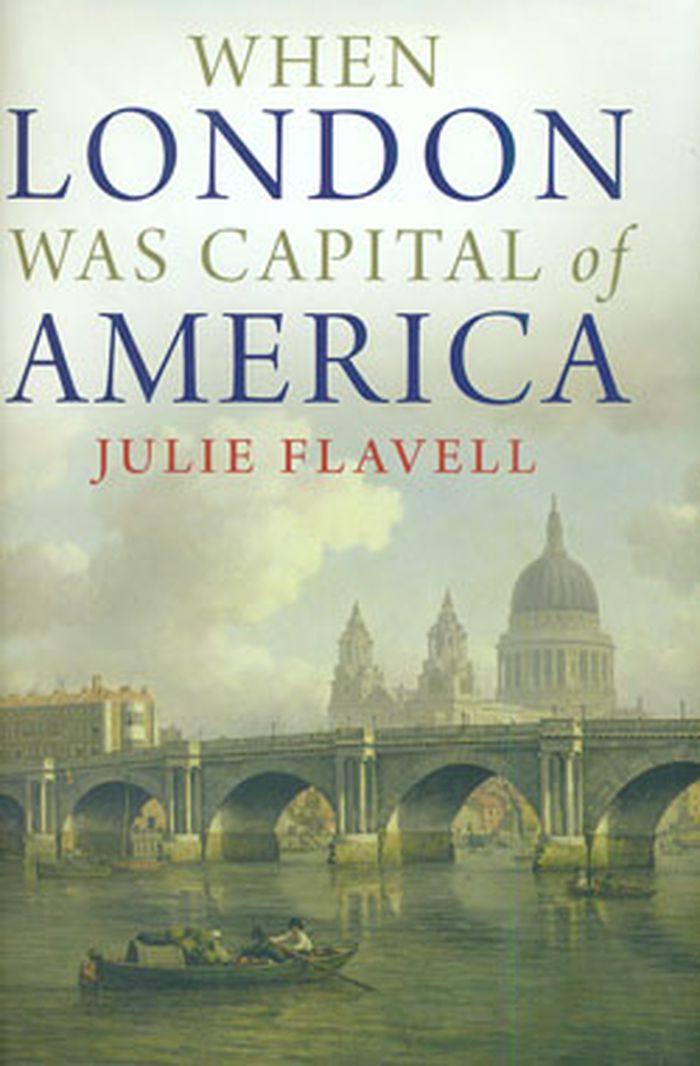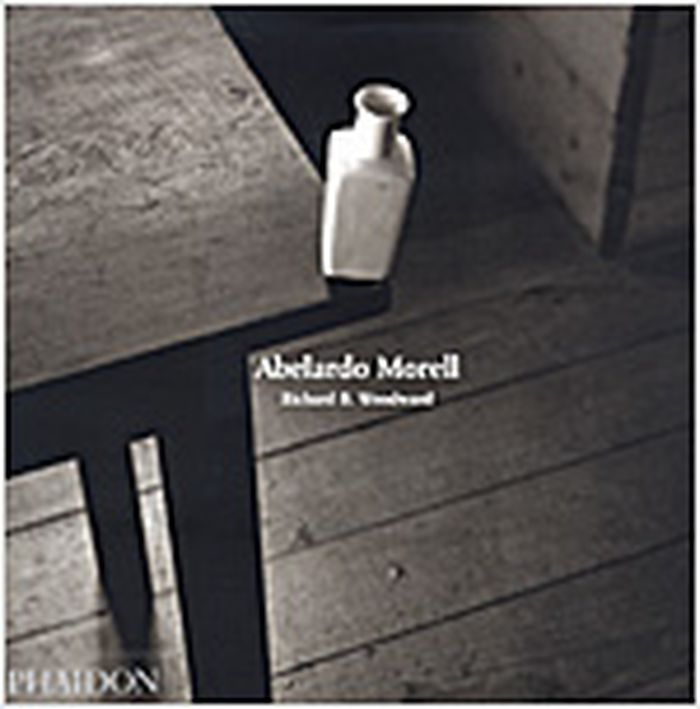books
When America became suburban
$23.95
(available to order)
Summary:
In the decades after World War II, the United States became the most prosperous nation in the world and a superpower whose dominance was symbolized by the American suburbs. Spurred by the decline of its industrial cities and by mass suburbanization, people imagined a new national identity—one that emphasized consumerism, social mobility, and a suburban lifestyle. The(...)
When America became suburban
Actions:
Price:
$23.95
(available to order)
Summary:
In the decades after World War II, the United States became the most prosperous nation in the world and a superpower whose dominance was symbolized by the American suburbs. Spurred by the decline of its industrial cities and by mass suburbanization, people imagined a new national identity—one that emphasized consumerism, social mobility, and a suburban lifestyle. The urbanity of the city was lost. In "When America became suburban", Robert A. Beauregard examines this historic intersection of urban decline, mass suburbanization, domestic prosperity, and U.S. global aspirations as it unfolded from 1945 to the mid-1970s. Suburban expansion and the subsequent emergence of sprawling Sunbelt cities transformed every aspect of American society. Assessing the global implications of America’s suburban way of life as evidence of the superiority of capitalist democracy, Beauregard traces how the suburban ideology enabled America to distinguish itself from both the Communist bloc and Western Europe, thereby deepening its claim of exceptionalism on the world-historical stage. Placing the decline of America’s industrial cities and the rise of vast suburban housing and retail spaces into a cultural, political, and global context, Beauregard illuminates how these phenomena contributed to a changing notion of America’s identity at home and abroad. "When America became suburban" brings to light the profound implications of de-urbanization: from the siphoning of investments from the cities and the effect on the quality of life for those left behind to a profound shift in national identity.
books
September 2006, Minneapolis, London
Suburbs
books
$58.95
(available to order)
Summary:
From sprawling houses to compact bungalows and from world-famous museums to a still-working gas station, Frank Lloyd Wright’s designs can be found in nearly every corner of the country. While the renowned architect passed away more than fifty years ago, researchers and enthusiasts are still uncovering structures that should be attributed to him. William Allin Storrer is(...)
The architecture of Frank Lloyd Wright: a complete catalog, fourth edition
Actions:
Price:
$58.95
(available to order)
Summary:
From sprawling houses to compact bungalows and from world-famous museums to a still-working gas station, Frank Lloyd Wright’s designs can be found in nearly every corner of the country. While the renowned architect passed away more than fifty years ago, researchers and enthusiasts are still uncovering structures that should be attributed to him. William Allin Storrer is one of the experts leading this charge, and his definitive guide, The Architecture of Frank Lloyd Wright, has long been the resource of choice for anyone interested in Wright. Thanks to the work of Storrer and his colleagues at the Rediscovering Wright Project, thirty-seven new sites have recently been identified as the work of Wright. Together with more photos, updated and expanded entries, and a new essay on the evolution of Wright’s unparalleled architectural style, this new edition is the most comprehensive and authoritative catalog available. Organized chronologically, the catalog includes full-color photos, location information, and historical and architectural background for all of Wright’s extant structures in the United States and abroad, as well as entries for works that have been demolished over the years. A geographic listing makes it easy for traveling Wright fans to find nearby structures and a new key indicates whether a site is open to the public. Publishing for Wright’s sesquicentennial, this new edition will be a trusted companion for anyone embarking on their own journeys through the wonder and genius of Frank Lloyd Wright.
books
July 2017
Architecture Monographs
Pictures for books
$42.00
(available to order)
Summary:
Like so many of the best photographers, Thomas Roma has a flair for thinking in book form. His first book, the limited-edition and handbound volume Brooklyn Gardens (1980), affirmed this flair from the outset of his career, and over the past 30 years Roma has published 13 volumes, always composing and sequencing his classical and modernist vision of contemporary life with(...)
Pictures for books
Actions:
Price:
$42.00
(available to order)
Summary:
Like so many of the best photographers, Thomas Roma has a flair for thinking in book form. His first book, the limited-edition and handbound volume Brooklyn Gardens (1980), affirmed this flair from the outset of his career, and over the past 30 years Roma has published 13 volumes, always composing and sequencing his classical and modernist vision of contemporary life with care and thought. Roma’s concern for bookmaking accords with his general autodidacticism: he is self-taught to the degree that he even designs and builds his own cameras and lighting equipment. Pictures for Books is the first retrospective volume on Roma. It gathers selections from four previous publications: Found in Brooklyn (1996), Come Sunday (1996), Sicilian Passage (2003) and On Three Pillars: Torah, Worship and the Practice of Loving Kindness, The Synagogues of Brooklyn (2007). Shot in black and white, the sequences included here display two signature Roma traits: a quietly steady and penetrative observation of the close-at-hand, and a fondness for the diverse neighborhoods of Brooklyn, the borough in which Roma was born and continues to reside. Pictures for Books is full of images that capture daily life (both in Brooklyn and abroad) as it opens out into moments of capacious quietude.
Photography monographs
$29.99
(available to order)
Summary:
In this book the cultural critic Marita Sturken argues that over the past two decades, Americans have responded to national trauma through consumerism, kitsch sentiment, and tourist practices in ways that reveal a tenacious investment in the idea of America’s innocence. Sturken investigates the consumerism that followed from the September 11th attacks; the contentious,(...)
Transportation, Tourism, Migration
November 2007, Durham
Tourists of History: memory, kitsch, and consumerism from Oklahoma City to Ground Zero
Actions:
Price:
$29.99
(available to order)
Summary:
In this book the cultural critic Marita Sturken argues that over the past two decades, Americans have responded to national trauma through consumerism, kitsch sentiment, and tourist practices in ways that reveal a tenacious investment in the idea of America’s innocence. Sturken investigates the consumerism that followed from the September 11th attacks; the contentious, ongoing debates about memorials and celebrity-architect designed buildings at Ground Zero; and two outcomes of the bombing of the Alfred P. Murrah Federal Building in Oklahoma City: the Oklahoma City National Memorial and the execution of Timothy McVeigh. Sturken contends that a consumer culture of comfort objects such as World Trade Center snow globes, FDNY teddy bears, and Oklahoma City Memorial t-shirts and branded water, as well as reenactments of traumatic events in memorial and architectural designs, enables a national tendency to see U.S. culture as distant from both history and world politics. A kitsch comfort culture contributes to a “tourist” relationship to history: Americans can feel good about visiting and buying souvenirs at sites of national mourning without having to engage with the economic, social, and political causes of the violent events. While arguing for the importance of remembering tragic losses of life, Sturken is urging attention to a dangerous confluence—of memory, tourism, consumerism, paranoia, security, and kitsch—that promulgates fear to sell safety, offers prepackaged emotion at the expense of critical thought, contains alternative politics, and facilitates public acquiescence in the federal government’s repressive measures at home and its aggressive political and military policies abroad.
Transportation, Tourism, Migration
$44.95
(available to order)
Summary:
This publication is an exhibition catalog produced by the Herbert F. Johnson Museum of Art at Cornell University for a show featuring forty-nine "dot-paintings" produced by Aboriginal artists from the settlement of Panpunya. Dot-painting has become an art instantly associated with Aboriginal Australia. In the more than thirty-five years since the advent of this movement,(...)
Art Periods and Styles
February 2009, Ithaca
Icons of the desert : early aboriginal paintings from Papunya
Actions:
Price:
$44.95
(available to order)
Summary:
This publication is an exhibition catalog produced by the Herbert F. Johnson Museum of Art at Cornell University for a show featuring forty-nine "dot-paintings" produced by Aboriginal artists from the settlement of Panpunya. Dot-painting has become an art instantly associated with Aboriginal Australia. In the more than thirty-five years since the advent of this movement, Papunya works have been widely exhibited and acquired by private collectors and museums in Australia, and increasingly abroad. This is the first book to focus on the founding expressions of Papunya art. It examines their origins in the paintings produced in Papunya in the Western Desert during the years 1971 to 1973, after the Sydney schoolteacher Geoffrey Bardon provided Aboriginal men with art materials and encouraged them to paint on Masonite, against the wishes of Australian government officials. These paintings claim a unique status. Only around six hundred were made. They are also the first painted works to transfer the designs of desert ceremonial imagery to a permanent surface. The book is illustrated with full-color plates of the forty-nine exhibited works by such great artists as Clifford Possum Tjapaltjarri, Johnny Warangkula Tjupurrula, and Tim Leura Tjapaltjarri. In addition, it features numerous color figures of comparative works and documentary photographs of the original artists at work, some never before published, and a chronological catalog documenting the works’ history and iconography.
Art Periods and Styles
$42.00
(available in store)
Summary:
The Bauhaus Dessau, designed by Walter Gropius and from 1925 to 1932 the headquarters of the "Hochschule für Gestaltung Bauhaus Dessau", attracts around 80,000 visitors annually from Germany and abroad who are in search of the roots of the 20th century Modernism. Now the first book in which the UNESCO world cultural heritage site is introduced following its complete(...)
Bauhau Dessau : architecture, design, concept
Actions:
Price:
$42.00
(available in store)
Summary:
The Bauhaus Dessau, designed by Walter Gropius and from 1925 to 1932 the headquarters of the "Hochschule für Gestaltung Bauhaus Dessau", attracts around 80,000 visitors annually from Germany and abroad who are in search of the roots of the 20th century Modernism. Now the first book in which the UNESCO world cultural heritage site is introduced following its complete renovation is available. Featuring more than 110 black and white photographs, "Bauhaus Dessau" presents the whole scope of architectural and artistic variety and quality of the building. The book sketches the history of the building, its architectural parts, the interior design created by the Bauhaus artists, as well as the functions of the building. "Bauhaus Dessau" is well-suited as a companion for a tour through the building as well as a reference of individual details. In addition to the visual objects, the text also describes the work carried out in the former workshops and their most important products, because architecture, design and concept of the Bauhaus are inseparably connected to each other.
Modernism
$35.00
(available to order)
Summary:
Benjamin Franklin secretly loved London more than Philadelphia: it was simply the most exciting place to be in the British Empire. And in the decade before the outbreak of the American Revolution, thousands of his fellow colonists flocked to the Georgian city in its first big wave of American visitors. At the very point of political rupture, mother country and colonies(...)
When London was capital of America
Actions:
Price:
$35.00
(available to order)
Summary:
Benjamin Franklin secretly loved London more than Philadelphia: it was simply the most exciting place to be in the British Empire. And in the decade before the outbreak of the American Revolution, thousands of his fellow colonists flocked to the Georgian city in its first big wave of American visitors. At the very point of political rupture, mother country and colonies were socially and culturally closer than ever before. In this first-ever portrait of eighteenth-century London as the capital of America, Julie Flavell recreates the famous city's heyday as the centre of an empire that encompassed North America and the West Indies. The momentous years before independence saw more colonial Americans than ever on London's streets: wealthy Southern plantation owners in quest of culture, slaves hoping for a chance of freedom, Yankee businessmen looking for opportunities in the city, even Ben Franklin seeking a second, more distinguished career. The stories of the colonials, no innocents abroad, vividly recreate a time when Americans saw London as their own and remind us of the complex, multiracial - at times even decadent - nature of America's colonial British heritage.
History until 1900, Great Britain
books
$79.25
(available to order)
Summary:
'More would be unnecessary, less impossible', is designer Bruno Ninaber van Eyben's principle. His work, for which he was the first to receive the Kho Liang Ie Award in 1979, is characterized by silent dialogues between form, function, technology and material. From a minimalist position Ninaber van Eyben searches for pragmatic solutions to make functional objects, always(...)
Bruno Ninaber van Eyben with compliments
Actions:
Price:
$79.25
(available to order)
Summary:
'More would be unnecessary, less impossible', is designer Bruno Ninaber van Eyben's principle. His work, for which he was the first to receive the Kho Liang Ie Award in 1979, is characterized by silent dialogues between form, function, technology and material. From a minimalist position Ninaber van Eyben searches for pragmatic solutions to make functional objects, always keeping in touch with the end product's poetic quality. Among other classics he gave the wristwatch (1973), the neck watch (1976) and the TL lamp (1977) to the world. His watches are still commercially successful. In 1980 Ninaber designed the Dutch coin series with the portrait of H.M. Queen Beatrix and eighteen years later his design won the competition for the Dutch side of the Euro coin. His products grace museum collections in the Netherlands and also abroad, notably at the Museum of Modern Art in New York. Together with Wolfram Peters and Peter Krouwel he founded the industrial design studio n|p|k in 1985. He was its co-director for twelve years. In 1997 he started a new office, Bruno Ninaber van Eyben design & production. It develops high-quality and sometimes more personal products independently and for a limited number of customers, such as the Prime Minister's national gift, the chairperson's gavel for Parliament and the new chain of office for the mayor of Papendrecht, a small town near Rotterdam. "With compliments" is not a traditional monograph. It is mainly a story in images, showing Ninaber's products and sources of inspiration. Short, strong statements underline the images and provide them with a context.
books
January 2002, Rotterdam
Design Monographs
$27.00
(available to order)
Summary:
Since the first edition of "Edible Estates : Attack on the Front Lawn" was published in 2008, interest in edible gardening has exploded across the United States and abroad. This greatly expanded second edition of the book documents the eight Edible Estates regional prototype gardens that author Fritz Haeg has planted in California, Kansas, Texas, Maryland, New Jersey, New(...)
Edible estates : attack on the front lawn, 2nd edition
Actions:
Price:
$27.00
(available to order)
Summary:
Since the first edition of "Edible Estates : Attack on the Front Lawn" was published in 2008, interest in edible gardening has exploded across the United States and abroad. This greatly expanded second edition of the book documents the eight Edible Estates regional prototype gardens that author Fritz Haeg has planted in California, Kansas, Texas, Maryland, New Jersey, New York and England, and includes personal accounts from the homeowner-gardeners about the pleasures and challenges of publicly growing food where they live. Ten "Reports from Coast to Coast" tell the stories of others who have planted their own edible front yards in towns and cities across the country. In addition to essays by landscape architect and scholar Diana Balmori, edible-landscaping pioneer Rosalind Creasy, bestselling author and sustainable-food advocate Michael Pollan and artist and writer Lesley Stern, this edition features updated text by Haeg (including his observations on the Obama White House vegetable garden); a contribution from Mannahatta author Eric W. Sanderson; and Growing Power founder, MacArthur Fellow and urban farmer Will Allen's never-before-published Declaration of the Good Food Revolution. This is not a comprehensive how-to book, nor a showcase of impossibly perfect gardens. The stories presented here are intended to reveal something about how we are living today and to inspire readers to plant their own versions of an Edible Estate. If we see that our neighbor's typical grassy lawn instead can be a beautiful food garden, perhaps we will begin to look at the city around us with new eyes. Our private land can be a public model for the world in which we would like to live.
Abelardo Morell
$29.95
(available to order)
Summary:
Born in Havana, Abelardo Morell emigrated to the United States in 1962, where he took his first photography course after winning a scholarship to Bowdoin College - a small liberal arts college in Maine. There, Morell experimented with a variety of photographic techniques to create surreal effects that reflected his feelings of alienation as a Cuban living abroad. He(...)
Photography monographs
September 2005, London, New York
Abelardo Morell
Actions:
Price:
$29.95
(available to order)
Summary:
Born in Havana, Abelardo Morell emigrated to the United States in 1962, where he took his first photography course after winning a scholarship to Bowdoin College - a small liberal arts college in Maine. There, Morell experimented with a variety of photographic techniques to create surreal effects that reflected his feelings of alienation as a Cuban living abroad. He proceeded to complete the graduate programme at Yale University, where he worked within the framework of Robert Frank and Garry Winogrand’s tradition of black-and-white street photography. In 1983, he began teaching at the Massachusetts College of Art in Boston, where he remains a professor. In 1986, Morell began a family and his fascination with his son engaged a new interest in this domestic environment as a subject. Morell began exploring the world from a child’s perspective – approaching mundane household objects in a new way that challenges the viewer’s perception of reality and how we see it. Morell transforms everyday objects by distorting angles and using extreme close-ups, and by exploiting perspectives that confuse and jar with our expectations. For instance, viewed from below a stack of toys blocks tower over the viewer; and a close-up of liquid pouring from a jar seems ominous and dramatic rather than an everyday occurrence. Similarly, Morell continued to transform the familiar into the surprising in his series of photographs of books, maps, American money and, more recently, a series that illustrates a new edition of Lewis Carroll’s Alice’s Adventures in Wonderland. This preoccupation with reality and illusion is most clearly realised in Morell’s series of camera obscura images. He takes an ordinary room and tapes black plastic over the windows, leaving only a 3/8" hole for the light. After setting up a large-format camera in the room and pointing it at the opposite wall, Morell leaves - a single exposure takes 8 hours. In the resulting images a scene of Brooklyn floats upside-down along the walls of his son’s bedroom; global landmarks like the Uffizi and the Eiffel Tower are projected across hotel rooms. In this, Morell’s best known and most ambitious series, the distinction between the outside and the domestic world is merged and his preoccupation with the mechanics of human vision and the principles of photography is illuminated.
Photography monographs






